July 31-August 3, 2017
The Forks
Humans have been meeting at the junction of the Assiniboine and Red Rivers for at least 6000 years. The city of Winnipeg grew up around this site. At The Forks [where the rivers meet], we took two walking tours with Parks Canada personnel, started and ended a city trolley tour, watched people playing and relaxing, and enjoyed a delicious meal.
We had seen red chairs on our trip through the Maritime Provinces last summer and we were glad to see them again. Parks Canada places them in special places and encourages users to share the experiences they have on social media.
We enjoyed art in the Forks and were especially taken with this piece that requires sunlight to complete it.
Canadian Museum for Human Rights
 This museum, authorized in 2008, is designed to enhance the public’s understanding of human rights, to promote respect for others and to encourage reflection and dialogue. Thought-provoking exhibits provide examples where human rights through history were respected or violated. The uppermost level is a Tower of Hope offering views of the surrounding area.
This museum, authorized in 2008, is designed to enhance the public’s understanding of human rights, to promote respect for others and to encourage reflection and dialogue. Thought-provoking exhibits provide examples where human rights through history were respected or violated. The uppermost level is a Tower of Hope offering views of the surrounding area.
Manitoba Assembly Building
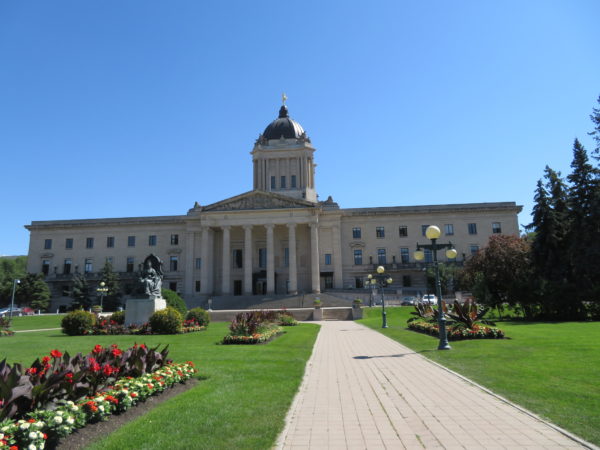 The Manitoba Assembly Building was designed by Frank Worthington Simon and Henry Boddington III and was built between 1913 and 1920. Books have been written about the architecture, historical and Masonic references, and how the building includes Fibonacci Sequences, Golden Ratios and Sacred Geometry. Lights for example, have 13 bulbs–for the 12 apostles and Christ. Stairs are in sets of 13. The entry is a perfectly square room measuring 66.6 feet on each side, which is meant to represent the numerological number 666, which are all the numbers added from one to 36, which is the square of 6, in mathematics, geometry, and arithmetic.
The Manitoba Assembly Building was designed by Frank Worthington Simon and Henry Boddington III and was built between 1913 and 1920. Books have been written about the architecture, historical and Masonic references, and how the building includes Fibonacci Sequences, Golden Ratios and Sacred Geometry. Lights for example, have 13 bulbs–for the 12 apostles and Christ. Stairs are in sets of 13. The entry is a perfectly square room measuring 66.6 feet on each side, which is meant to represent the numerological number 666, which are all the numbers added from one to 36, which is the square of 6, in mathematics, geometry, and arithmetic.
 The bison on either side of the staircase represent sacred bulls that guard temple entrances. Each bison weighs two and a half tons. To avoid scratching the marble floors when the bronze statues were installed, the floor was flooded and the statues slid in on blocks of ice.
The bison on either side of the staircase represent sacred bulls that guard temple entrances. Each bison weighs two and a half tons. To avoid scratching the marble floors when the bronze statues were installed, the floor was flooded and the statues slid in on blocks of ice.
 The building is made largely of Tyndall a limestone with dolomite mottling and frequent fossils.
The building is made largely of Tyndall a limestone with dolomite mottling and frequent fossils.
The rotunda
The statue Eternal Youth (nicknamed the Golden Boy) graces the cupola.
Manitoba Museum
Manitoba is a native word for “where the spirit exists”. The Manitoba Museum, built in 1964, showcases the province’s human and natural heritage. Reviewers commented that the exhibits are showing their age, but the displays of wildlife by biome were impressive.
We also liked a display of skeletons. This one is a giant ground sloth that lived about 10,000 years ago.
One of the most popular exhibits is a replica of the Nonsuch. Its voyage to Canada in 1668 led to the establishment of the Hudson’s Bay Company. It was smaller than most merchant vessels of the time so that it could sail up-river to Hudson’s Bay and could be hauled out of the water and not crushed by ice during the winter.

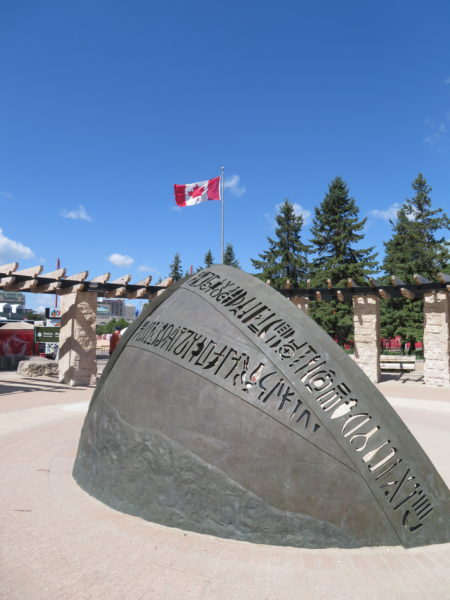
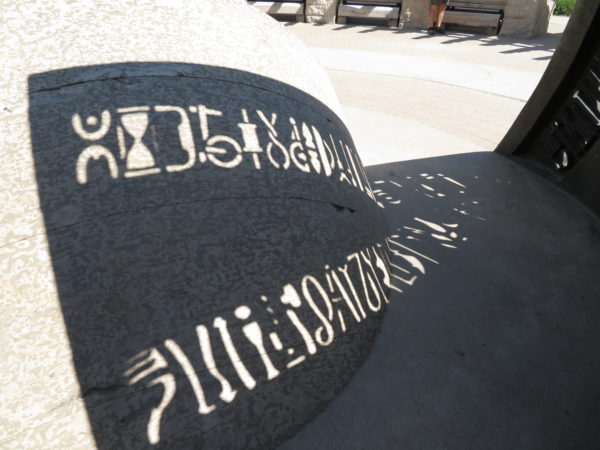

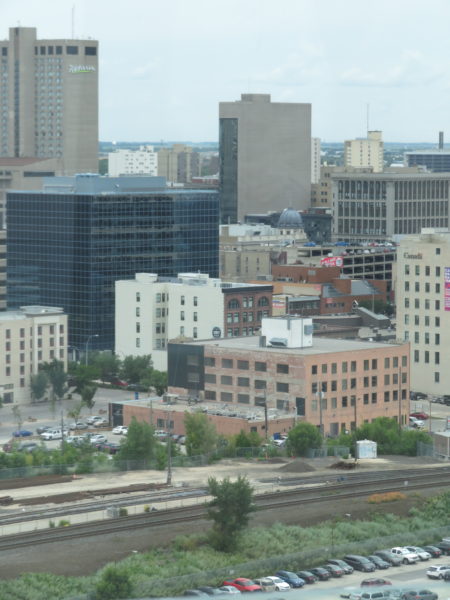





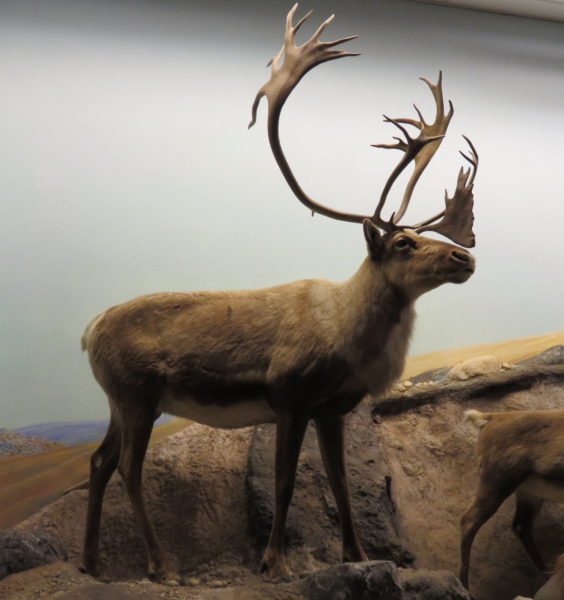








2 Comments
Esther McAfee · September 29, 2017 at 11:57 am
I’m sure you realize you within 100 miles of where I was raised. My home was just over the border in MN along the Red River. Don’t go there in Jan. or Feb…. 40 below keeps out the riffraff according to Garrison Keeler.
Jay Waters · September 29, 2017 at 1:47 pm
Seeing your post makes me think things are starting to get back to normal. Somehow I missed the last one during the Irma/post-Irma festivities. Stay safe and keep rolling!